Car vs. 'herd of deer' accident reported on Pike Road, Batavia
A car vs. "herd of deer" accident is reported on Pike Road in Batavia. The caller is roadside in a black Toyota Tundra. Law enforcement is responding. No word on injuries, if any.
A car vs. "herd of deer" accident is reported on Pike Road in Batavia. The caller is roadside in a black Toyota Tundra. Law enforcement is responding. No word on injuries, if any.
Major General Anthony P. German, The Adjutant General for the State of New York, announces the promotion of members of the New York Army National Guard in recognition of their capability for additional responsibility and leadership.
Samantha Futter, from Batavia, serving with the Company A (Distribution), 427th Brigade Support Battalion is promoted to the rank of Specialist.
Army National Guard promotions are based on overall performance, attitude, leadership ability, and development potential.
These promotions additionally recognize the best qualified Soldiers and attract and retain the highest caliber Citizen Soldiers for a career in the New York Army National Guard.
For more information about the New York Army National Guard, visit www.dmna.ny.gov or www.1800goguard.com.
The University at Albany congratulates the more than 3,300 students who graduated at its 173rd Commencement from May 19-21.
Anthony Misisco, of Pavilion, graduated summa cum laude with a Bachelor of Arts in Psychology in Spring 2017.
James Pisaturo, of Bergen, graduated with a Master of Science in Curriculum Development & Instructional Technology in Spring 2017.
Jessica Dudek, of Batavia, graduated with a Master of Science in Professional Accountancy in Spring 2017.
Some 3,500 students graduated during Rochester Institute of Technology's 132nd commencement celebration, held in May, including:
Michael Barnard of Bergen (14416), who graduated with a BS in criminal justice.
Juliana Blackburn-Baskin of Batavia (14020), who graduated with a BS in international business.
Michael Burns of Batavia (14020), who graduated with a BS in management information systems.
Cassandra Golda of Bergen (14416), who graduated with a BS in international business.
Erica Hickey of Byron (14422), who graduated with a BS in advertising and public relations.
Ryan Hochreiter of Le Roy (14482), who graduated with a BS in mechanical engineering.
Rachel Kobel of Bergen (14416), who graduated with a BS in environmental sustainability, health and safety.
Alexis La Boy of Le Roy (14482), who graduated with a BS in civil engineering technology.
Samantha Mitchell of Batavia (14020), who graduated with a BS in business administration-accounting.
Maryssa Peirick of Batavia (14020), who graduated with a BS in diagnostic medical sonography.
Russell Schultz of Le Roy (14482), who graduated with a BS in computer science.
Courtney Smith of Batavia (14020), who graduated with a BS in political science.
Christopher Snyder of Darien Center (14040), who graduated with a BS in bioinformatics.
Ryan Warner of Batavia (14020), who graduated with a BS in physics.
Rochester Institute of Technology is home to leading creators, entrepreneurs, innovators and researchers. Founded in 1829, RIT enrolls about 19,000 students in more than 200 career-oriented and professional programs, making it among the largest private universities in the United States.
The university is internationally recognized and ranked for academic leadership in business, computing, engineering, imaging science, liberal arts, sustainability, and fine and applied arts. RIT also offers unparalleled support services for deaf and hard-of-hearing students. The cooperative education program is one of the oldest and largest in the nation. Global partnershipsinclude campuses in China, Croatia, Dubai and Kosovo.
Press release:
In recognition of National Cyber Security Awareness Month, Genesee Community College (GCC) and Delta College have collaborated to offer a free webinar focusing on the career opportunities in the ever-expanding cyber security industry from 1 to 2 p.m. on Thursday, Oct. 12.
According to the U.S. Bureau of Labor Statistics, the rate of growth for jobs in information security analysts is projected at 18 percent through 2022 -- which is much faster than the average for all other occupations.
The webinar will feature a three-person panel discussing trends, opportunities and challenges facing those in cyber security careers. Panelist Joshua George is the instructor of Criminal Justice at Delta College. George has more than 12 years in federal law enforcement with focus on computer forensics and digital evidence. Panelist Mike Tarcan, currently serves as the information security manager at Ellucian. Tarcan focuses on security incident and threat management for a global cloud company. Panelist Kristopher Howery is an associate professor of Computer Science and Info Tech at Delta College. Howery founded the Cyber Defense Club that provides students with hands-on network defense experience. Howery also designed a multipurpose lab to teach security and network classes such as Cisco CCNA Security, Check Point, CCSA firewall, incident response and wireless security, to name a few. Additionally, he works in forensics under the networking track. Each panelist will share how they got started in the field, discuss what their security roles entail and answer questions from participants.
Both GCC students and community members are encouraged to attend the webinar which will be broadcast at the GCC Batavia campus in room T102 on Thursday, Oct. 12 in the Conable Technoloy Building. Delta College students and guests are invited to view the webinar at Delta College's Main Campus in N007, located near the Redbrix Area. Attendees are encouraged to arrive by 12:50 p.m. to ensure seating. Remote access to the webinar is available on a limited basis.
Batavia High School’s annual Open House is from 6:30 to 8:30 p.m. on Thursday, Sept. 28th. Parents of BHS students are encouraged to attend this informative evening and can pick up their child’s schedule in the Main Lobby.
Our Open House will consist of an “open classroom drop-in” structure allowing for a more flexible personal connection between teachers and parents. In the Atrium, parents will have an opportunity to visit some outside organization stations that are important in the lives of our high school students. Senior parents are also encouraged to stop by the Counseling Center during the evening to discuss the college application process.
Please join us at Open House and be a part of your child’s high school experience. The school is located at 260 State St. in the City of Batavia.

A friend of the family of Lorne Brudz has set up a fundraising page to assist them following the death last week of the Batavia High School senior.
Ken Schady said his intention is "help the family with expenses, as no one plans to bury their own children and therefore have no funds put aside for such an event."
He set the fundraising page on Free Funder.
"I chose Free Funder because Go Fund Me takes 5 percent of the proceeds and I wanted to get as much money as possible to the family," he said.
The funds are designated for Lorne's mother, Colleen Brudz.
Lorne's funeral services are today.
To get to the fundraising page, click here.
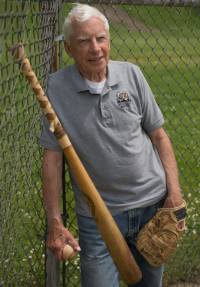
Dougherty was Batavia's baseball historian, digging deep into the lore and stats of how the game was played locally over the past 150 years or so. Much of his work can be found in his book, "A View from the Bleachers: Batavia Baseball."
"Bill Dougherty was the kind of person every community should have, a dedicated, passionate, knowledgeable, local historian," said Bill Kauffman, a friend of Dougherty's and himself a historian. "His primary interest was baseball, so his work was also responsible for Major League Baseball rewriting its record book and including the name of Vince Maney, who was the only Batavian to ever appear in a Major League Baseball game."
In 1912, Ty Cobb was suspended and the players on his Detroit Tigers team decided to go on strike. The commissioner ordered the game played so the Tigers had to hire replacement players. The shortstop that day for a game in Philadelphia was listed as Pat Meany. Dougherty was able to find the evidence and prove that Pat Meany was really Vince Maney.
Dougherty was a member of the Notre Dame Sports Boosters, Society of American Baseball Research, Board of Directors of the Genesee County Baseball Club and a life member of the Stafford Volunteer Fire Department. He was a graduate of Batavia High School and Alfred State College.
"He was a great guy," Kauffman said. "He was full of energy and enthusiasm and wit and mischief and we’re really going to miss him."
Previously:
Marcos Cacho-Velaz, 37, of Depew Street, Rochester, is charged with felony DWI, unlicensed operation, 3rd, refusal to take breath test, failure to dim headlights, and drinking alcohol in motor vehicle. Cacho-Velaz was stopped at 10:28 p.m. Saturday on Alexander Road, Alexander, by Deputy Jeremy McClellan.
Rachel Lynn Crawford, 32, of North Winton Road, Rochester, is charged with aggravated unlicensed operation, 3rd. Crawford was arrested on a warrant for allegedly driving without a license on March 7. She was arraigned in City Court, paid a fine, and was released.

An apparent domestic dispute led to two motor-vehicle accidents in Batavia yesterday afternoon and resulted in the arrest of a 27-year-old city resident on assault charges for allegedly trying to run over a man in the parking lot of a business on East Main Street.
Lakara D. Johnson, of Highland Park, was charged with attempted assault, 1st, unlawful imprisonment, 1st, and reckless endangerment, 1st.
The incident started when police were called to Main and Center for a two-car accident. By the time police arrived, one of the vehicles had left the scene. Officers then received a report of a second motor-vehicle involving the suspect vehicle. The driver allegedly tried to hit a male who had managed to get out of the vehicle and instead struck a picnic table at the business.
The vehicle again fled the scene and was located on Howard Street.
Johnson was located on Colorado Avenue and taken into custody.
She was arraigned in City Court and released under supervision of Genesee Justice pending further court proceedings.
Press release:
On Thursday, Sept. 28, one of the businesses in industrial park will be conducting a fire pump test. This work may result in a period of discolored water in the general area of Pearl Street, South Main Street and River Street. Residents should check to make sure water clarity has returned before resuming activities such as laundry which may be impacted.
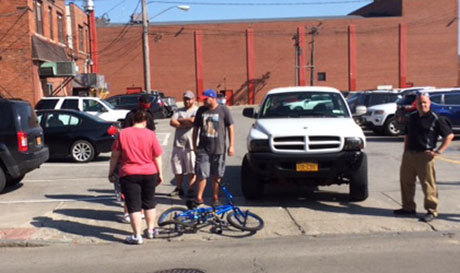
A bicyclist has been hit by a car on Center Street, across from Adam Miller Toys and Bicycle.
Minor injuries reported.
City fire and Mercy EMS responding.
Photo by Alex Feig, WBTA.

A two-car accident is reported at East Main and Center Street.
Injuries are reported.
City Fire and Mercy EMS responding.
UPDATE 3:12 p.m.: Possible hit-and-run. Top photo by Dan Fischer, WBTA. Bottom photo by Lisa Ace, The Batavian.
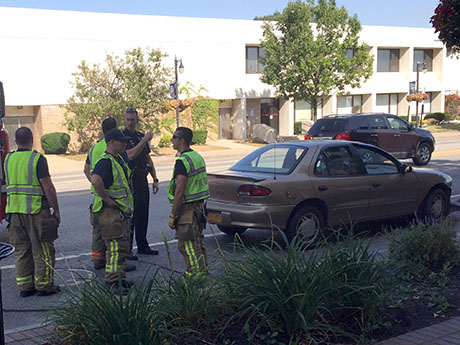

David Alan Leach, 23, of Morganville Road, Stafford, is charged with DWI, driving with a BAC of .08 or greater, failure to stop at stop sign, and driving a motor vehicle on a sidewalk. Leach was charged following the report of a property damage accident at 12:18 a.m. Thursday at 337 Bank St., Batavia. The accident was investigated by Officer Peter Flanagan.
Brian Thomas Resch, 29, of Buffalo Road, Bergen, is charged with criminal mischief, 4th, criminal possession of marijuana, 5th, and unlawful possession of marijuana. At 5:33 p.m. Saturday, the Sheriff's Office received a complaint on Buffalo Road of man who had disabled a phone to prevent a person from seeking emergency assistance. Upon investigation by deputies Ryan DeLong and Richard Schildwaster, Resch was allegedly found in possession of a quantity of marijuana and he was accused of smoking marijuana in a public place.
Derek James Wert, 35, of Tracy Avenue, Batavia, is charged with harassment, 2nd. Wert is accused of pushing another person during an argument at noon Sept. 18 at a location on North Street, Batavia. Wert was also charged with second-degree criminal contempt related to an incident at 7:02 p.m. Wednesday in Austin Park. Wert is accused of violating an order of protection.
Markeda D. Starks, 26, of Highland Park, Batavia, was arrested on a warrant. Starks posted bail and was released.
Adam Ross Atkinson, 29, of Kent Road, Stow, Ohio, is charged with under the influence of narcotics in public. Atkinson was arrested after deputies responded to multiple calls at 6:35 p.m. Friday of a disruptive male at a convenience store in Byron.
Brian R. Barnard, 53, of Leicester, is charged with burglary, 3rd, burglary, 2nd, and criminal mischief. The alleged burglary was reported at 3:08 p.m. Thursday in Le Roy. This is a State Police case. No further information released.
Brandon A. Brott, 20, Jacey L. McGregor, 19, and Jessica H. Shepard, 26, all three of Lockport, are charged with unlawful possession of marijuana. Brott, McGregor, and Shepard were arrested at 3:36 a.m. in the Town of Alabama by State Police.
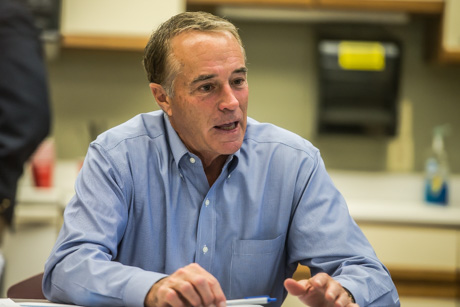
Local farmers and other members of the agriculture industry were briefed Saturday on various legislative issues by Rep. Chris Collins and a member of his staff.
The topics discussed included immigration, the new farm bill, the Waters of the U.S. rule and even a couple of non-agricultural items. The meeting was held at the Cornell Cooperative Extension office on East Main Street, Batavia.
Legislative Assistant Taylor Kloustin provided an update on key issues Collins is working on, including the H2A work visa program, workforce legislation, the upcoming effort to pass a new farm bill, and Waters of the U.S. rules.
Collins is meeting next week with the Secretary of Labor, Alexander Acosta, to discuss immigration issues, most notably expanding the H2A visa program to allow workers from other countries to stay in the United States all year long when employed in certain farm jobs, such as dairy and livestock.
She said Collins is also interested in seeing the program revised for temporary workers so that they can get back into the country easier once they've established ongoing employment, such as a TSA-like precheck, perhaps with a biometric ID card.
There's also legislation pending that would move responsibility for farm labor from the Department of Labor to the USDA, which Kloustin said is an agency more familiar with the needs of farmers for labor.
The committee working on the Farm Bill renewal is expected to have language in place by November.
Collins is chair of the specialty crops caucus so his office is working with United Fresh on setting up a specialty crops awareness program in November for House staffers working on the Farm Bill so they can better understand the needs of specialty crop growers.
Dean Norton, an Elba dairy farmer, was one of those who brought the conversation back during the Q&A time to the Waters of the U.S. rule. The rule was approved during the Obama Administration and Trump has rescinded it by executive order. Farmers were upset by the bill because it could be used to regulate the smallest bodies of water on farms.
Norton and other farmers noted that what can be undone by executive order can be reimplemented by executive order in the next administration. They encouraged Collins to pursue legislation that would make Trump's order permanent.
Craig Yunker, CEO CY Farms, expressed concern about the direction the Trump Administration is taking on trade. He's particularly concerned about the seeming protectionist positions of Peter Navarro, a trade advisor to the Trump Administration. Yunker said with the United States pulling out of the Trans-Pacific Partnership there are already trade problems with Japan.
Collins said there's a lot of uncertainty about what will happen with trade during the Trump Administration because we're only eight months into his presidency. He thinks Trump has the right people around him, though, to handle the issue.
"Trump very clear at the U.N.," Collins said. "It’s America first; he’s going to look out for America’s interest. He is going to expect other countries to do their fair share. He's looking for fair trade.
"My worry is your worry," Collins added. "Typically, the retaliation is on ag. That’s the gotcha. Whether it’s Canada or whether it’s Mexico or whether it’s something like apples going to Asia, we do know they retaliate using ag. I share that concern, but the administration knows this. They’re smart guys. To me, it’s too early to tell."
Maureen Torrey, of Torrey Farms, a large grower of produce, said her big concern remains trade restrictions in Canada, which makes it harder to sell U.S.-grown produce north of the border, even though there is no restriction on produce from Canada being sold here.
"It’s pretty sad that within five miles of the border you have 95 percent the population of Canada and the only time I can sell is if they don’t have it and then I have to go through a process to have them to say 'yes, you can ship something', " Torry said. "We need to get that door a little bit more open."
One farmer wondered if the bipartisan spirit displayed by Trump when he reached a deal a couple of weeks ago with Sen. Charles Schumer and Rep. Nancy Pelosi is something the GOP leadership in both houses will pick up on and follow.
"To be honest I think Trump is going to lead it from start to finish," Collins said.
While Trump's deal on the debt ceiling and relief for the victims of Harvey and Irma may have shocked and even upset some members of Congress, the leadership is going to have to fall in line, Collins said.
"I think he's telling Mitch McConnell and Paul Ryan, 'You better get behind me,' " Collins said. " 'I'm the president. I'm the CEO.' "
Collins said he's solidly behind the president on this point and thinks a lot of what the president wants to get done this congressional term, most notably tax reform, will require bipartisan effort. Even within the GOP, he noted, there are too many divergent interests for the Republicans to act unilaterally.
"I applauded him for doing what he did, though others just thought it was the worst thing that ever could have happened," Collins said. "There are a lot of folks that want to protect their own turf, if you will, and they didn’t like it. But as I’ve said, 'How did we do on health care?' Not so good, and that’s something we unanimously agreed on until the rubber hit the road and the document’s there. That’s the whole problem."
The other non-farm issue to come up was North Korea.
" 'Rocket Man', " Collins said with a chuckle. "I’ve got to give Trump credit. He is so good with nicknames. I think Rocket Man is the funniest thing I’ve ever heard. It’s poking at Kim Jong-un. It’s getting under his skin. And it’s appropriate. He’s going to be Rocket Man from now on.”
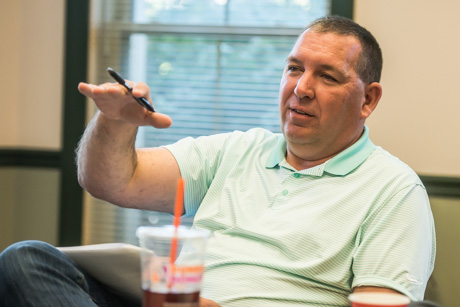
Dean Norton, dairy farmer from Elba.
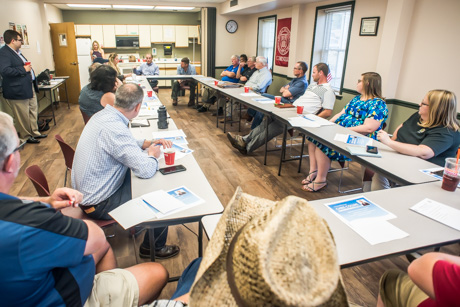

Victor Figueroa's ambition is to open a Puerto Rican restaurant in Batavia specializing in empanadas, and after winning both the Top Competitor Award and the People's Choice Award on Saturday night at the FreshLAB's Foodie Challenge, that dream is a step closer to reality.
Figueroa along with four other top finishers in the cook-off held at BOCES will now be able to take a tuition-free course in restaurant management and then compete in a Shark Tank-like business plan pitch. The top two contestants will be offered spots to try out their restaurant concept in the new FreshLABs facilities inside the former Newberry Building on Main Street along with Eli Fish Brewing Company.
In all,12 aspiring restaurateurs signed up for the Foodie Challenge, eight competed Saturday night and the other finalists were: Gina Bianco, of Middleport, with an Eggplant Busiolo; Judy Hysek, of Batavia, with a vegan mushroom and sage stuffed ravioli with a cashew cream sauce; Rob Rudnicki, of Batavia, with a fish taco; and Ronald Smith, of Rochester, with a pollo de miel (honey chicken).
The contestants are expected to come up with a restaurant concept and menu that is unique to Batavia and Figueroa is counting empanadas as his path to victory. He made a Puerto Rican cheeseburger empanada with a passion fruit chili sauce.
“It’s one of our favorites in Puerto Rico," Figueroa said. "We eat them for lunch, lunch breakfast and dinner every single day. You can walk with them. It’s just one of those things, when we eat it takes you back Puerto Rico.”


Photo of the winning empanadas by Alex Figueroa.
The Blue Devils varsity football team took on Franklin Pennsylvania Friday night in their homecoming game.

The Blue Devils scored on their opening drive and then scored a saftey on because of a bad snap of Franklin's first offensive play. Franklin answered with a touchdown of their own later in the 1st. But the game proceeded with Batavia out scoring Franklin about 2 to 1.
In the mid 3rd quarter Franklin seemed all but defeated until a long pass and reception that was run in for a touchdown.

Franklin rallied and came back bring the score to within 8 points to 28-20. The Franklin rally was killed when a pass bounced out of a receivers hands and was intercepted by Batavia. The rest of the game was all Blue Devils.

Final score, Blue Devils 42, Franklin Pennsylvania 20.
Alex Rood rushed 24 times for a total of 136 yards and 1 TD
Chandler Baker rushed 8 times for a total of 60 yards and 2 TDs
Baker also attempted 24 passes completed 20 for 1 TD and a total of 180 yards.
On Defense Taio Iburi Bethel had 8 tackles
Anthony Ray had 6 tackles for a loss of 3 yards.
The Games key plays are pictured below.









During Half time we were introduced to the Batavia HS Homecoming court.

Also during halftime there was an emotional remembrance of fellow student, senior Lorne Brudz who passed away recently. The stadium observed a long moment of silence as classmates lit luminaire balloons as a tribute.

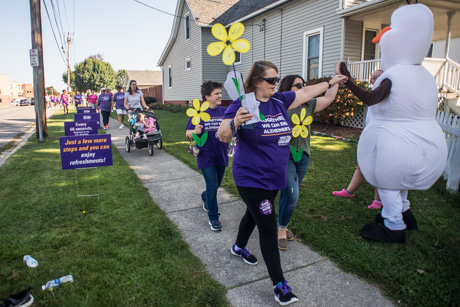
The Alzheimer's Association held its annual Walk to End Alzheimer's through Batavia today.




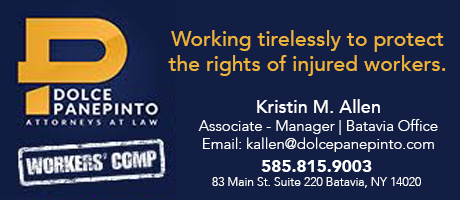
Dolce Panepinto works tirelessly to protect the rights of injured workers by making sure that those responsible are held accountable. If you or a family member are injured at work, or in your private life, contact us today for a free case evaluation at 585-815-9003.
Below are some previous litigation highlights:
Please call Kristin Allen at 585-815-9003 for any of your workers’ compensation needs.
Copyright © 2008-2022 The Batavian. All Rights Reserved. Privacy Policy | Terms of Service